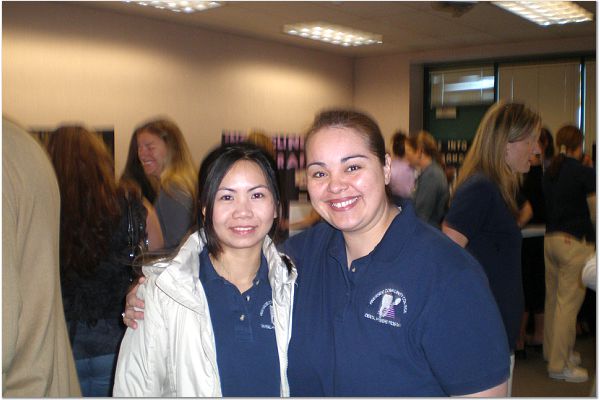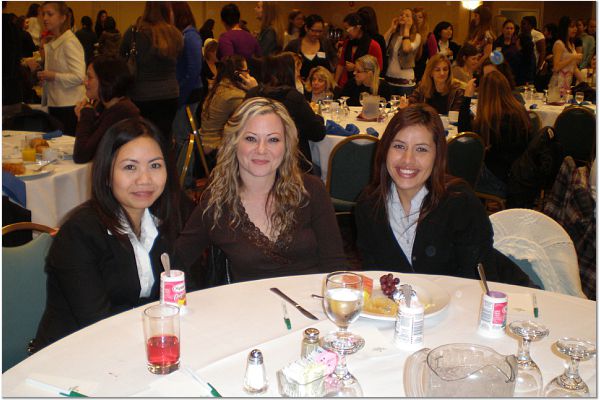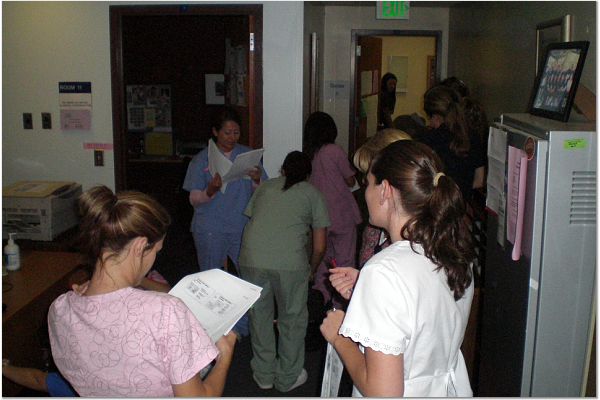Diemk81's Website
Professionalism
Hygienists are trained to have good communication skill in professional performance. Hygiene students are guided to communicate to instructors, classmates, and patients with respect, consideration, and empathy. All students have to do daily and weekly self evaluation to recognize their weakness which helps to improve in the future. I think this is valuable information to me while I am attending the RCC Dental Hygiene Program. If I do not have this knowledge, I cannot treat a patient successfully. Dental hygiene students have to do a number of research literature during their intensive academic courses, and they have to take CE course for the rest of their profession job.
During this semester, I did a research on aphthous ulcers and wrote an ethical dilemma paper.
This is an apthous ulcers report.
Recurrent Aphthous Ulcers
Recurrent aphthous uler is a common disease that can interfere with a patient’s speaking and eating ability. Any daily activities can trigger an aphthous ulcer, such as: exaggerated brushing technique, acidic or spicy foods consumption, or stress are major predisposing factors (Aphthous Ulcers, 2008). The purpose of this paper is to review the study about recurrent aphthous ulcer regard to clinical manifestations, etiology, differential diagnoses, and the current treatment modalities.
Definition
Recurrent aphthous ulcers (RAU) are called canker sores or oral mucosal ulcerations (Preshaw, et al. 2007). Three types of RAU are minor, major, and herpetiform. Minor aphthous ulcer is the most common RAU that affects 70 to 90 percent of all RAU cases, and the lesion is less than one centimeter in diameter (Preshaw et al. 2007). Lesions that are greater than one centimeter in diameter are major aphthous ulcers, which needs to be biopsy because major aphthous ulcers resemble squamous cell carcinoma symptoms (Gerger, 2008). Finally, herpetiform aphthous ulcer presents as tiny multiple lesions which can be mistaken for herpes simplex (Preshaw et al. 2007).
Clinical Manifestations
Recurrent aphthous ulcers appear as yellow core and erythematous halo and they are different from surrounding tissue (Kutcher,
Etiology
Etiology of aphthous ulcers are unclear, but appears to be multifactorial such as genetic predisposition, allergic, anxiety, stress, trauma, immulogical element, nutritional deficiency, and systemic factors (Murray, McGuinness, Biagioni, Hyland, & Lamey, 2005). Trauma is the common cause of mouth ulcer such as toothbrush abrasion, lips or cheeks biting, or braces (“Aphthous Ulcer”, 2008). Some foods that are high in gluten can also trigger aphthous ulcers (Scully, Grosky, & Lozada-Nur, 2003). Stress can lead to hormonal changes, which is a predisposing factor for RAU such as women during menstruation or pregnancy (McCullough et al. 2007). According to Ship (as cited by McCullough, 2007), most medical and dental students who have RAU are during their emotional depression; for example, during midterms and finals. The study also shows that anxiety can influence the progression on RAU (McCullough et al. 2007).
Differential Diagnosis
Differential diagnosis of recurrent aphthous ulcers are periodic fever, pharyngitis and aphthae, Behcet’s syndrome, HIV infection, and lichen planus (Femiano, Gombos, Nunziata, Esposito, & Scully, 2005). Patients with bowel disease also present with aphthous-like ulcers (Heyde, 2008).
Treatment
Numerous treatments have been studied to evaluate RAU. The primary goals are to reduce pain, help ulcer heal, and prevent future occurrences (Preshaw et al. 2007). Subantimicrobial dose doxycycline (SDD) was discovered to be effective in treatment of RAU (Preshaw et al. 2007). A study of fifty patients with recurrent aphthous ulcer were randomly selected from Research Ethics Committee testified that SDD helped in pain reduction and prevented new oral ulcer from developing because SDD showed inhibition of mast cells. These mast cells are often located underneath aphthae and involved in developing of ulcers (Preshaw et al. 2007). Tetracycline is an antibiotic agent and is also tested to be effective in treatment of aphthous ulcers because tetracycline inhibited the production of mast cells (Preshaw et al. 2007).
A study of 228 patients in
Numerous topical agents were also studied to manage RAU such as Aphtheal. Fifty-seven people with RAU were randomly selected by Block Drug Company Inc. United Stated to be treated. Aphtheal containing 5% Amlexanox paste has been shown in reduction pain and ulcer size and increasing healing time. Suggestions were made; stating that Aphtheal application in early stage of lesion development will give the best result (Murray et al. 2005).
Another topical medication that was studied in the management of RAU is hyaluronic acid, which functions as a tissue-healing reagent (Nolan, Baillie, Badminton, Rudralingham, &
Finally, a study about how effective 2-octyl cyanoacrylate, a bioadhesive, works on RAU was performed by the United State Food and Drug Administration. The study were on 200 patients with at least one oral lesion involved in the experiment. The result of the study was that the bioadhesive serves as a pain relief reagent. Bioadhesive is available over the counter and can be used by everyone (Kutcher et al. 2001).
Conclusion
Recurrent aphthous ulcers can be recognized by clinical appearance and can be triggered by any daily activities (Aphthous Ulcer, 2008). Even though the exact treatment for RAU has not been discovered, numerous over the counter medicines or topical agents are available to help reduce pain, promote healing, and prevent future recurrent (Kutcher et al. 2001). Dental professionals should be aware of aphthous ulcers present in patient mouth to avoid further trauma to patients. Knowing what medications to recommend to patients is also important in regards to patients discomfort and stress.
References
Aphthous Ulcer. (2008, April). Wikipedia, the free encyclopedia. Retrieved April 17, 2008, from
http://en.wikipedia.org/wiki/Aphthous_ulcer.
Femiano, F., Gombos, F., Nunziata, M., Esposito, V., & Scully, C. (2005, September). Short
communication pemphigus mimicking aphthous stomatitis. Journal of Oral Pathology
and Medicine, 34(8), 508-510.
Gerger, D. (2008). Oral disease with immunologic pathogenesis. Lecture 3/12/2008.
Heyde, M. (2008). Inflammatory bowel disease. Lecture 4/3/2008.
Kutcher, J. M.,
Evaluation of a bioadhesive device for the management of aphthous ulcers. The Journal
of American Dental Association, 132(3), 368-376.
McCullough, M. J., Abdel-Hafeth, S., & Scully, C. (2007, November). Recurrent aphthous
stomatitis revisited; clinical features, associations, and new association with infant
feeding practices? Journal of Oral Pathology and Medicine, 36(10), 615-620.
Murray, B., McGuinness, N., Biagioni, P., Hyland, P., & Lamey, P., (2005). A comparative
study of the efficacy of Aphtheal in the management of recurrent minor aphthous
ulceration. The Journal of Oral Pathology and Medicine, 34, 413-9.
Nolan, A., Bailie, C., Badminton, J., Rudralingham, M., & Seymour, R. A., (2006, September)
. The efficacy of topical hyaluronic acid in the management of recurrent aphthous
ulceration. The Journal of Oral Pathology and Medicine, 35(8), 416-465.
Preshaw, P. M., Grainger, P., Bradshaw, M. H., Mohammad, A. R., Powala, C. V., & Nolan, A.,
(2007, April). Subantimicrobial dose soxycycline in the treatment of recurrent oral
aphthous ulceration a pilot study. The Journal of Oral Pathology and Medicine, 36(4),
236-240.
Scully, C., Gorsky, M. & Lozada-Nur, F. (2004). The diagnosis and management of recurrent
aphthous stomatitis. The Journal of the American Dental Assosiation, 134(2), 200-207.
Sun, A., Chia, J., Chang, Y., & Chiang, C. (2002, June). Levanisole and Chinese medicinal herbs
can modulate the serum interleukin-6 level in patients with recurrent aphthous ulceration.
The Journal of Oral Pathology and Medicine, 32, 206-14.
This is the ethical dilemma paper
Non-diagnosis of a Disease
Mr. Micky Mouse, a 62 years old, Asian male, was scheduled with me for the first time dental hygiene appointment. Mr. Micky has not had a teeth cleaning since 2002. He complained about an ache and loosening on the madibular anterior teeth. Patient was present with normal vital signs, no medication, and no severe systemic diseases except smoking one pack of cigarettes per day. During extra and intra oral examination, I revealed that he has a large corrugated white patch lesion on his left buccal mucosa and it did not wipe off. During DDS exam, I presented to Dr. Adomy about the lesion, and Dr. Adomy asked me if knew the etiology and differential diagnosis. I presented that fact that the patient smokes and the differential diagnose would be tobacco pouch or white sponge nervus. The patient also presents with a perioapical abcess on number 26. We preferred him to endodontic for either root canal or extraction of tooth number 26. Dr Adomy taught me about how malocclusion can cause periodontal abcess. As a result, I forgot to ask doctor if the patient need a referral regarding to his white lesion.
Ethical Decision Making Process
Step 1 in the ethical decision-making model is to identify the ethical dilemma. I am concerned about my patient regarding his white lesion. According to my professor in oral pathology, every white lesion that does not wipe off needs a biopsy because white lesions have higher cancerous rates. However, I forgot to ask the doctor and have not got to the second check in yet. The question remains whether I should the patient to let him know that he needs a biopsy for his white lesion. Because I can see calculus on his dental radiograph, he is possibly medium/heavy, and I do not have time for heavy case.
Step 2 and 3 are gathering information and listing possible options for action.
- Call the patient and convince him to have a biopsy for his white patch on his left bucal mucosa.
- Talk to Dr. Adomy and see if I can bring him a few minutes before clinic time for Dr. Adomy to check and refer the patient for a biopsy.
- Wait for the next semester, so I have time to bring him back.
Step 4 is apply the ethical principles to each options identified. Option 1: apply nonaleficience-no harm to the patient. Patient smokes and is present with a white lesion, so patient has a higher risk to have oral cancer. Option 1 also apply autonomy because patient has the right to know about his body, make a decision for himself, and acknowledge that the white lesion may not be a cancer. Veracity is also applied in option 1-to be honest and tell the truth to the patient. However, this option may violate societal trust from my instructors because I cannot diagnose a disease
Option 2: apply nonmaleficience and beneficence- no harm to the patient and benefit the patient because it is good to know if the patient does not have cancer, or if it is, the patient can seek for the treatment early. This option also maintains societal trust because I asked for the instructors’ confirmation. This option may violate justice because it may not fair to other students that I have extra clinic time and instructors that do not have full hour lunch
Option 3 violates nonmaleficiecne-doing no harm to the patient. If the patient’s lesion is cancerous, waiting until next semester would be too long and the cancer may metastases to other part of the body. This option also violates veracity because I did not tell the truth about the lesion to the patient. In addition, this option also violates fidelity-faithful promises and obligations by rules and regulations and meet all reasonable expectation. I was not faithful to the rule from oral pathology class that every white lesion, which does not wipe off, needs a biopsy immediately.
Step 5 is making a decision. I will talk to Dr. Adomy about my plan and patient situation. If he agrees to schedule the patient for another appointment, I will implement his advice. If he does not agree, I will contact the patient and let him know that he should have a biopsy for his lesion.
Step 6 is implementation step. I will approach Dr. Adomy the first thing in next clinic session.
The first picture is at CE course at MVC, and the second one is at SAHDA conference.


 intensive course, so we have to study every minute.
intensive course, so we have to study every minute.
Class of 2009 is always happy to be in dental hygiene program in Riveside Community College; Moreno Valley Campus.
